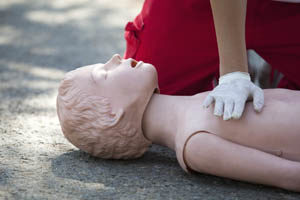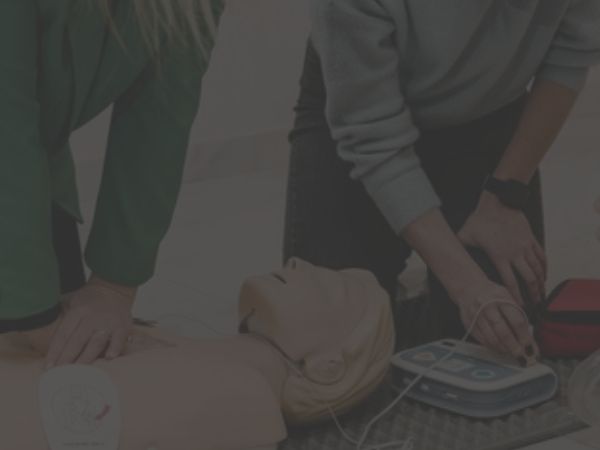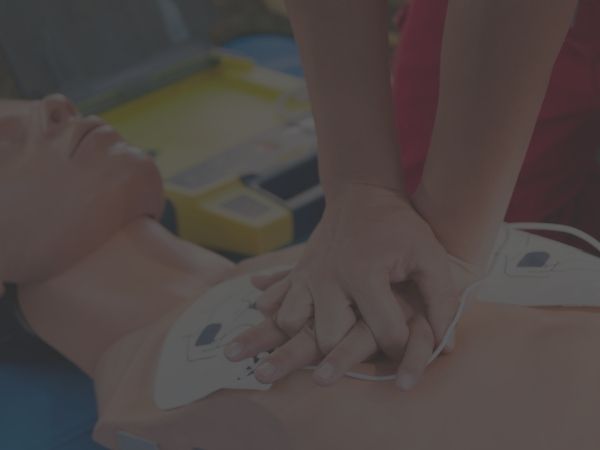Your cart is currently empty!
Ultimate Guide To Buying An AED
An automated external defibrillator (AED) is an essential resource in the community for people that suffer cardiac arrest, and those that have the proper training can use these devices to save lives. Thus, more organizations are considering purchase of a system as a means of emergency preparedness. Unfortunately, defibrillators vary by type and manufacturer, and the needs of your organization may not necessarily reflect the needs of others in your community.
Purchasing a defibrillator is also much more complex than simply ordering one online. Businesses involved in water sports will need to consider water resistance, and others may need to consider systems that work on both pediatric and adult individuals.
 Meanwhile, the laws governing the device’s use and implementation—the process of purchasing and installing a defibrillator in your organization’s buildings or vehicles—may require collaboration with physicians and emergency preparedness planners. Fortunately, you can streamline the process of buying and implementing a defibrillator by taking a few considerations, understanding your local laws and knowing where to purchase a high-quality system.
Meanwhile, the laws governing the device’s use and implementation—the process of purchasing and installing a defibrillator in your organization’s buildings or vehicles—may require collaboration with physicians and emergency preparedness planners. Fortunately, you can streamline the process of buying and implementing a defibrillator by taking a few considerations, understanding your local laws and knowing where to purchase a high-quality system.
Key Considerations Before Purchasing
The considerations to buying a defibrillator will help organizations avoid unnecessary purchases and ensure the system chosen meets requirements for the facility. More importantly, those that take such considerations can reduce the likelihood of damage to the unit, plan for future maintenance of the device and even secure funding without detracting from more pressing parts of the budget. The top considerations before purchasing a unit include:
1. Features to Look for Based on Business Type
Your business type will help you determine whether you need a defibrillator. For example, those in industries with a high risk of injury may have a greater demand for such a device. Meanwhile, a unit is an excellent way to show your consumers that you are taking steps to ensure their safety. Of course, it helps to narrow down the need for such a device by asking yourself these questions:
- Do consumers at your business have a reasonable expectation for health problems or risks; are you a health care or dental facility?
- Do you provide services to the public?
- Where will the device be located?
- Do you already have a cabinet for housing the unit?
- Do staff members already possess training for using the device?
- What elements may affect the storage and use of the unit?
- How will people know where the unit is stored?
- Does your business have any high-risk factors that make having a unit available crucial to safety and health of consumers or persons served?
- Do you have the funding available to purchase a defibrillator?
The answers to these questions determine what features are needed in the system you select. For example, your unit may include the following benefits:
- Resistance to Damage and the Elements. Units that are designed for use around the water would be ideal for businesses operating near bodies of water.
- Ease of Use in Broad Daylight. Although this feature may seem unusual, it is essential that the display is easy to see when used under direct sunlight.
- Voice commands. Depending on the type of unit, it may or may not include voice commands, such as “shock advised, stand clear and continue CPR.”
- Automatic Versus Semi-Automatic Devices. The final feature that varies involves the automatic nature of the device. A fully automatic system will deliver the shock when it detects a shockable rhythm, providing a warning to first responders. Meanwhile, semi-automatic systems may require a user press a button to deliver a shock.
2. Power Source and Changing Shock Intensity Standards
The next consideration focuses on the power source. A unit may be rechargeable, use manufacturer-specific batteries or replaceable batteries that can be purchased at any store. The power source also affects the shock intensity that the unit may provide. As the International Liaison Committee on Resuscitation (ILCOR) defibrillation standards evolve, it is important to consider the process for updating device programming to reflect the latest ILCOR standards.
For example, will the manufacturer dispatch a technician to visit your facility and update the unit, or will you need to ship the unit back to the manufacturer for reprogramming? If shipping is necessary, who pays the shipping cost? Moreover, will the manufacturer supply a temporary use system while your unit is reprogrammed?
In fact, the ILCOR now releases annual updates to the CPR and AED use algorithm. Therefore, knowing the answers to these additional questions will help you plan for changes in the use of the device and remain ready for an emergency.
3. Perpetual Costs of Maintaining a defibrillator, Including Replacing Batteries, Pads, and Cables
Purchasing a unit also comes with perpetual costs. While the initial cost of a unit may range from $1,400 to $3,000+, its perpetual costs derive from the need to replace batteries, service the unit when damaged, replace pads and cords, and update when the ILCOR changes standards.
Additional factors affect perpetual costs as well. For instance, cities and municipalities may require a paid registration and certification for possessing an on-site unit. This helps to pay for the cost of tracking units throughout the area and ensures first responders know where units are located. Ultimately, the unit could be dangerous when used inappropriately.
Even though it is designed not to deliver a shock unless a person is in a shockable rhythm, it could cause injury or harm, including causing cardiac arrest, when used improperly.
4. AEDs for Adults Versus Pediatric Victims
Another consideration is whether you will need an adult or pediatric unit. The shock levels for adult defibrillation differ from those of pediatric patients. Obviously, small businesses that cater to children and their parents may consider purchasing a pediatric-specific unit. However, the risk of an adult suffering cardiac arrest still exists, and therefore, it may be necessary to purchase an adult-specific unit. Now, many units exist that allow for use on either adults or children, such as those required in school settings. However, a hasty decision when purchasing a unit could lead to buying one or the other without considering the needs of those that will likely use the system.
5. Remember Training-Only Units Too
When shopping for a defibrillator, it is easy to jump on the first price below $1,000. Unfortunately, third-party marketplaces, such as Amazon and Walmart, may not necessarily make the type of device easy to see in descriptions.
A quick search of Amazon for “AED” reveals thousands of search results, some of which appear to include the unit. However, an in-depth review of the description shows it is only a carrying case or a training unit.
Training units are designed to help people that wish to learn how to use the system practice. This is identical to the training systems used during in-person CPR and life-saving courses. Users may apply pads, listen for commands, and learn how to respond. The training unit does not provide a real shock. Therefore, it is useless in deploying a defibrillator for a real emergency in your facility. At the same time, you may consider purchasing a training unit to help your staff learn how to use the device.
While on the topic of choosing a commercial-grade unit versus a training unit, prospective owners must also stay vigilant for personal and home use systems. These systems are designed to provide the same life-saving measures as a traditional system. However, the home and personal nature restrict them from use in public settings and in commercial applications.
6. Paying for Your Device
The cost of a defibrillator can vary widely. However, it is safe to assume a minimum cost of $1,300 for the complete unit. This does not include the housing cabinet, extra pads, cables, batteries, or cases. Some unit systems may go for as much as $3,100. The choice is largely dependent on your needs and available funds for purchasing a device.
Depending on your organization, you may apply for grants to cover the cost of a defibrillator.
For example, state-specific grants may exist for the purchasing of a defibrillator. Employee matching grant programs allow for employees to donate to defibrillator purchases, and some organizations, such as schools and youth centers, may accept defibrillators as an in-kind donation in lieu of financial gifts. This helps to reduce barriers to purchasing and implementing a unit in the facility.
Unfortunately, scammers have taken advantage of many similar grant programs. An excellent resource for determining the legitimacy of a grant program is AED.com.
Review State and Local Rules and Regulations Governing Device Ownership, Maintenance, Inspection and Use
The Occupational Health and Safety Administration (OSHA) does not require businesses or organizations to maintain a defibrillator, nor does the organization provide direction for how businesses purchase and implement a device. OSHA’s scope is limited to providing CPR and First Aid. However, state and local authorities have discretion in the requirements of businesses and public places purchase and implementation of a defibrillator. As a result, it is up to each individual to check with local authorities for regulations prior to purchase.
Some states may require a physician’s involvement for managing the medical direction of implementing a defibrillator, writing a prescription, and more. The associated physician will bear the burden of responsibility for ensuring the facility or organization adheres to applicable state laws. State laws also vary widely.
For example, Connecticut only requires anyone in possession of a unit to notify the Office of Emergency Medical Services (EMS), notes AEDUniverse.com. Meanwhile, Texas requires all owners to provide appropriate training for users on the use of a unit, the involvement of physicians in the training, stringent maintenance records, and notification of EMS, among additional requirements for schools, health care facilities, retailers and other organizations.
Securing a Prescription for a Defibrillator
Securing a prescription for a defibrillator, provided your state does not require a physician’s involvement, may also be necessary for certain manufacturers or resellers of the system. However, most resellers can assist you in getting a prescription. At the same time, community health centers are an excellent place to locate a local physician that will oversee your implementation. This is really the medical direction and management, and it doubles as a form of emergency preparedness planning.
Notification of Purchase and Implementation
All states have some form of required notification of the placement of a defibrillator to EMS or another agency that oversees first responders. In addition, organizations should place public notices in the building explaining the device’s location and access, comparable to emergency exit signage and notification.
Units That Meet Standard Requirements
 It can be hard to distinguish legitimate devices from counterfeit products and accessories. However, the list on Amazon is quite short, including:
It can be hard to distinguish legitimate devices from counterfeit products and accessories. However, the list on Amazon is quite short, including:
The rule of thumb is that if the unit is promoted as low-cost or free, double-check the resellers credentials prior to purchase. This will help you avoid counterfeit products and ensure you are prepared should an emergency arise.
Additionally, consider reviewing the manufacturer websites, which also sell units. Of course, it may be necessary to obtain a prescription or involve a physician, as noted previously, to purchase a unit. As noted by the ILCOR, the six primary manufacturers include:
- Cardiac Science
- Defibtech
- HeartSine Technologies, Inc.
- Philips Medical Systems/Heartstream
- Stryker Corporation
- ZOLL Medical Corporation
Demonstrate Your Commitment to Help Those in Need With the Right Unit for Your Organization
Although a handful of unit manufacturers exist, no business should make the decision to purchase a defibrillator without considering its full implications. The type of system used will vary based on the unique needs of your organization, and depending on your location, stringent laws and regulations may apply to its implementation. In some states, a physician must work with your organization to purchase and implement a defibrillator for use. By taking these considerations, understanding your local laws and knowing which units meet your requirements, you can make an informed decision.
Of course, any system is useless without knowing how to use it properly. Moreover, since a common aspect of defibrillator ownership approval is properly trained users, enroll yourself and your organization’s employees in a flexible, life-saving skills course online today. It’s a complex process, but purchasing a unit will save lives.
Keep Reading
9 responses
Thank you for your comment, you can check out our other journal articles for more topics on doctors!
It was a good view i will like to read more about this information thanks
Thanks for your interest in our online certification courses, if you need further assistance please feel free to reach out to customerservice@nhcps.com with any questions you may have!
Interesting written article, where I even can learn from. Thank you.
Do you have any idea how the new AHA 2020 guidelines will be?
I have tried searching for it online, but I haven’t found the answers yet. I read it will be available by October 2020?Please let me know if you have any insights.
Hello,
The 2020 AHA updates to ACLS will be released in October, and the remaining courses will be updated to a varying degree through out the rest of the year and 2021.
Hope this helps!
That confirmed from what I heard. Thank you!
Great article! Thank you for putting this together!
Wow thank you for the comment, that means a lot!










I will like to learn more about doctors